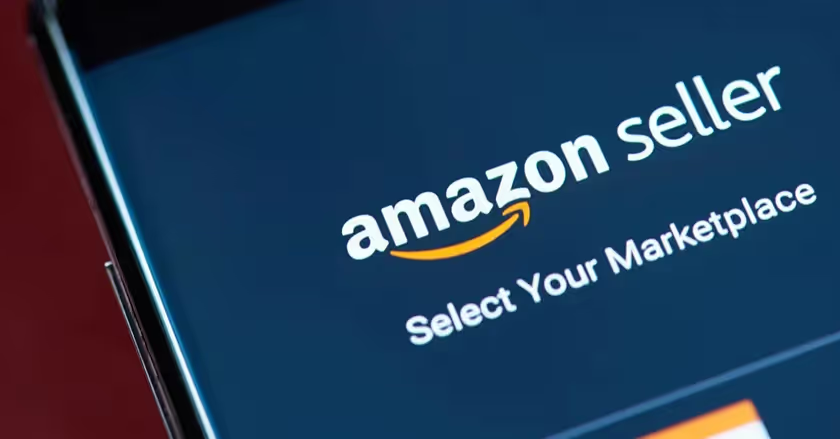What Can You Do on Amazon Vendor Central (1P) that You Can’t Do on Seller Central (3P)?
Pattern's Amazon experts review all the capabilities that Amazon 1P sellers have in comparison to Amazon 3P sellers so you can determine which option is best.
Making the switch from a first-party (1P) relationship to third-party (3P) relationship on Amazon can be daunting. You don’t want to lose any capabilities that you had on Vendor Central when you make the switch to Seller Central, but it’s hard to know exactly what might change. Let’s analyze what capabilities are exclusive to Vendor Central and what that means for switching to 3P.

What capabilities are exclusive to 1P sellers on Vendor Central?
Marketing preference
Many of the exclusive opportunities to 1P sellers involve automatic marketing and preferential drive time positions. For example, back to school, holiday, and Black Friday placement priority is given to 1P sellers. Additionally, creating things like electronic gift guides or other promotional options are often frequently 1P exclusive as well.
However, Kyle Rosebush, Skullcandy’s former Director of Digital Marketing and Ecommerce, shared that he didn’t consider these additional marketing tools quite as game-changing as some brands might think they are. “Historically, I haven’t seen it to be terribly effective. The reporting is pretty slim, so it’s hard to get buy-in on the executive level when we want to see return on ad spend, performance metrics, that type of thing,” Kyle said on our April webinar about 1P and 3P.
ARA Premium reporting
Secondly, 1P sellers are offered better in-Amazon reporting tools than 3P sellers are—at a cost. Only 1P vendors can buy Amazon Retail Analytics (ARA) Premium. However, while ARA Premium offers some insightful data, it’s often mixed up in Amazon jargon and can be difficult to understand. Unless a brand has the resources to analyze ARAP data and put it to good use, Kyle said he’d recommend a 3P partner to help analyze it for you. “In all reality, we’ve seen better reporting with Pattern, with 3P. It’s gotten a hold of our sale-through reporting, our inventory levels, effectiveness around advertising—all of those things. You just see more robust data with 3P,” Kyle said.
Product display ads
On the advertising front, 1P vendors have access to Product Display ads (ads displayed on product detail pages) while 3P sellers currently only have access to Sponsored Products and Sponsored Brands. However, Amazon is currently testing a similar beta for 3P testing called Sponsored Display ads, as well as adding video for Sponsored Products. Sellers on Amazon’s Brand Registry, vendors, and agencies working with Amazon US are eligible.
How much do 1P exclusive features matter?
As we’ve mentioned in previous blog posts, it’s apparent that many initiatives that began as 1P only have started moving to 3P as well. For example, A+ Content for vendors and Enhanced Brand Content for sellers was recently merged into A+ Content for all,regardless of sellers’ relationship with Amazon. Data reporting is another area that is often seen as a 1P advantage. However, Amazon’s Brand Analytics available to 3P sellers through Amazon Brand Registry effectively does the same thing as ARAP.
Amazon Vine is another program that’s historically been 1P only. However, after various betas among top-tier 3P sellers over the last year, Amazon has recently begun releasing Amazon Vine to sellers with Brand Registry as well. It's also important to note that some capabilities on Amazon have actually rolled out among 3P sellers before 1P vendors. For example, 3P actually had sponsored products before 1P did.
However, we should note that many 3P programs are only extended to third-party sellers who meet criteria on size, relevance, and participation on the Amazon platform. Brands with highly competent account managers can work to enter these programs themselves, but it generally takes more effort than 1P vendors will have to put in.
The case for 3P partnership
That being said, the vast majority of capabilities for 1P vendors and 3P sellers are the same. While entry points may be slightly more complicated on the 3P end, the reporting and control that brands get out of a 3P relationship can be extremely advantageous to any long-term ecommerce growth strategy.
After all, when brands are in a 1P relationship with Amazon, Kyle explained that they oftentimes run into bandwidth problems trying to understand Amazon jargon, analyze ARAP data, and still keep on top of everything else. “In that reality, you’re paying for premium data but then you may be limited in resources to be able to utilize that data. Whereas, if you’ve got a third-party partner they can be going into the data itself, driving the insights for you, helping with that overall strategy. Otherwise, you’re limited to whatever resources you have in house,” Kyle said. “It’s definitely been helpful to have a third-party partner help us navigate this and, ultimately, provide insights for us.
Want to see what is possible on Amazon with Pattern's expertise? Contact us today.


.jpg)







.jpg)